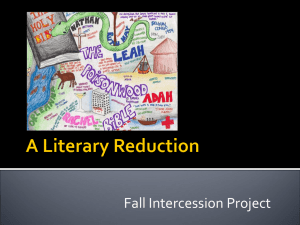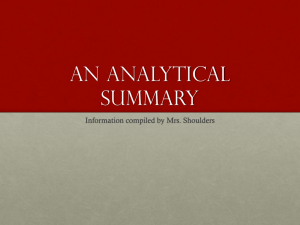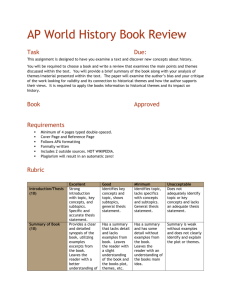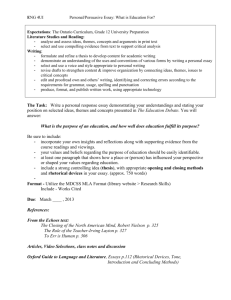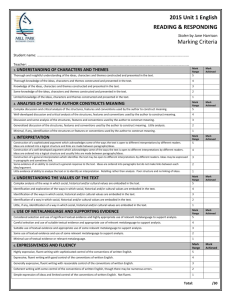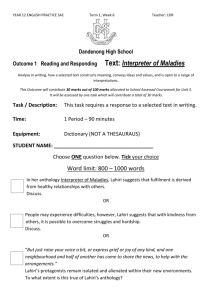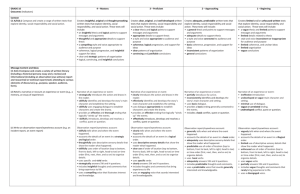Kelly `14 Comparison Essay Prompt Pride and Prejudice and A
advertisement
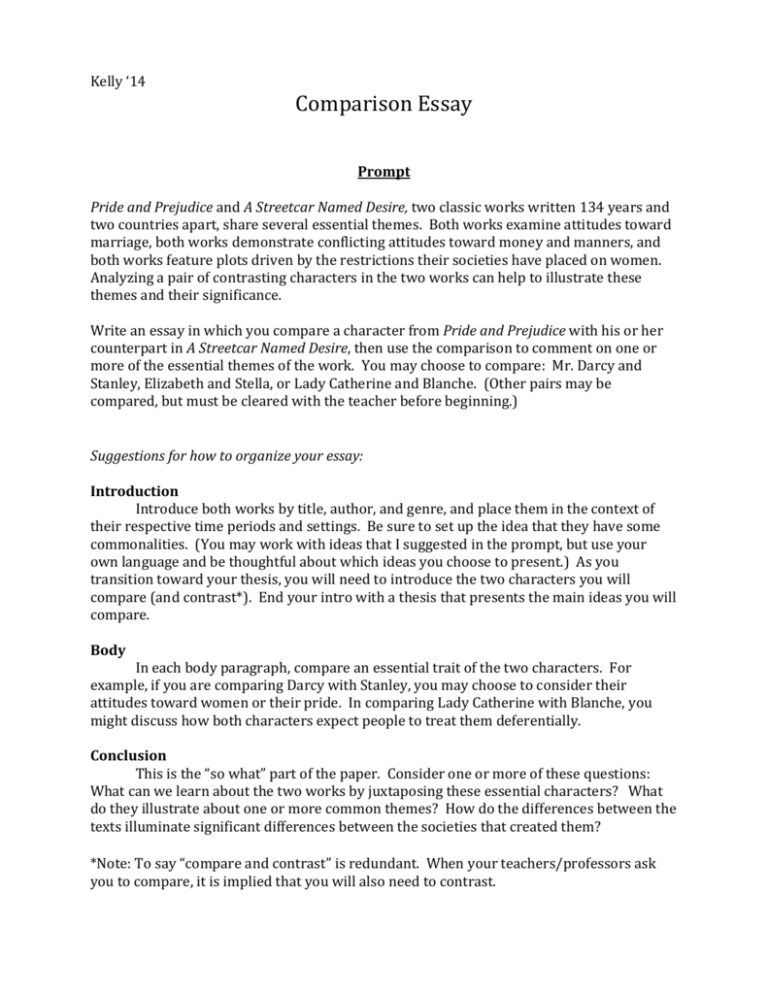
Kelly ‘14 Comparison Essay Prompt Pride and Prejudice and A Streetcar Named Desire, two classic works written 134 years and two countries apart, share several essential themes. Both works examine attitudes toward marriage, both works demonstrate conflicting attitudes toward money and manners, and both works feature plots driven by the restrictions their societies have placed on women. Analyzing a pair of contrasting characters in the two works can help to illustrate these themes and their significance. Write an essay in which you compare a character from Pride and Prejudice with his or her counterpart in A Streetcar Named Desire, then use the comparison to comment on one or more of the essential themes of the work. You may choose to compare: Mr. Darcy and Stanley, Elizabeth and Stella, or Lady Catherine and Blanche. (Other pairs may be compared, but must be cleared with the teacher before beginning.) Suggestions for how to organize your essay: Introduction Introduce both works by title, author, and genre, and place them in the context of their respective time periods and settings. Be sure to set up the idea that they have some commonalities. (You may work with ideas that I suggested in the prompt, but use your own language and be thoughtful about which ideas you choose to present.) As you transition toward your thesis, you will need to introduce the two characters you will compare (and contrast*). End your intro with a thesis that presents the main ideas you will compare. Body In each body paragraph, compare an essential trait of the two characters. For example, if you are comparing Darcy with Stanley, you may choose to consider their attitudes toward women or their pride. In comparing Lady Catherine with Blanche, you might discuss how both characters expect people to treat them deferentially. Conclusion This is the “so what” part of the paper. Consider one or more of these questions: What can we learn about the two works by juxtaposing these essential characters? What do they illustrate about one or more common themes? How do the differences between the texts illuminate significant differences between the societies that created them? *Note: To say “compare and contrast” is redundant. When your teachers/professors ask you to compare, it is implied that you will also need to contrast. Grading Rubric A 20 points B 17 points C 15 points D 13 points F 10 points Introduction skillfully addresses all suggested elements Introduction flows smoothly from introducing the works to a clear thesis Introduction adequately presents the works and includes a simple thesis Introduction is missing more than one element and/or the thesis is misleading Analysis of both characters is insightful Analysis of both characters shows some insight Analysis of both characters is clear but predictable Ample, specific concrete detail skillfully incorporated throughout the paper Ample concrete detail is less specific than an A paper; smoothly incorporated into the argument Adequate concrete detail may be general ; quotes may be longer than necessary and/or formulaically used Conclusion skillfully connects all elements of the paper and presents new insights into the texts Very few or no errors in conventions; quotations are cited correctly Conclusion clearly connects the elements of the paper and presents some insight into the texts Few errors in conventions; minor errors in citation of quotations Conclusion recaps main ideas and makes general statements about themes Introduction fails to include a suggested element and/or the thesis is lacking in some significant way Analysis of one or both characters is lacking in some significant way Paper relies on plot summary or vaguely-connected quotations for support; quotes are poorly incorporated in the argument Conclusion attempts to connect the characters to the themes with limited success Some errors in conventions do not interfere with reading; some errors in quotation citations Persistent conventions errors interfere with reading; significant errors in quotation citations Conventions errors are distracting and significantly interfere with reading; paper fails to cite quotations Analysis of one or both characters is missing or inaccurate Concrete detail is missing or inaccurate Conclusion fails to connect the characters to the themes or does so inaccurately
